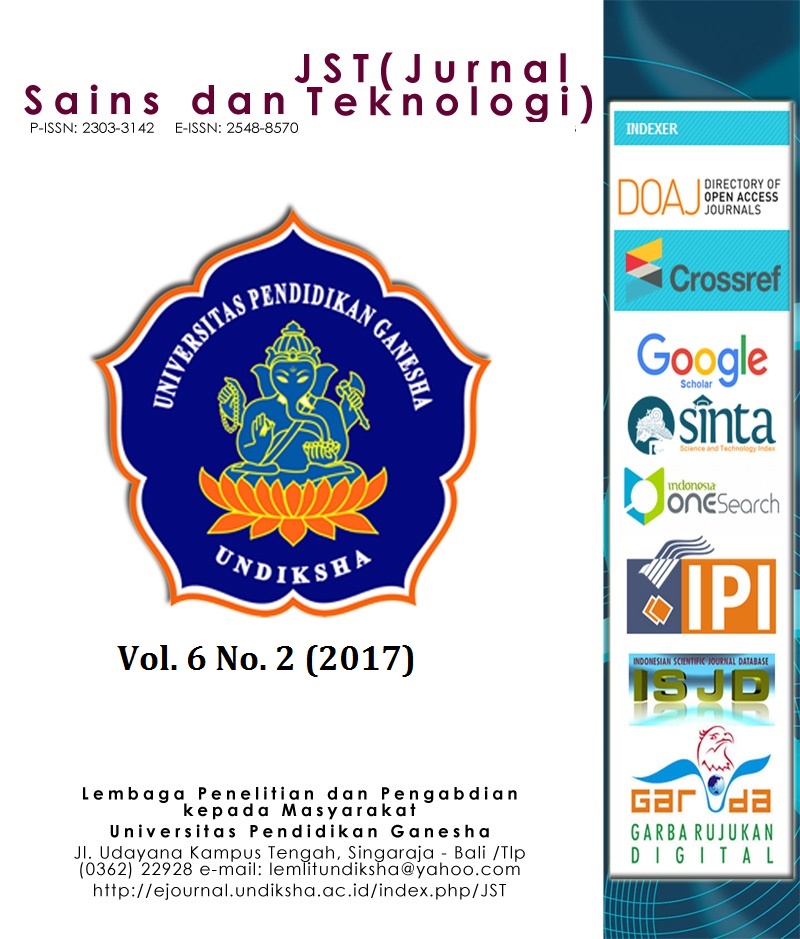RANCANG BANGUN PURWARUPA KLASIFIKASI WARNA OBJEK MENGGUNAKAN ROBOT LENGAN 4-DOF
DOI:
https://doi.org/10.23887/jstundiksha.v6i2.11810Keywords:
robot lengan, sensor warna, klasifikasi objek,Abstract
Robot lengan merupakan salah satu aplikasi robotika yang telah banyak diterapkan di dunia industri. Penelitian ini menerapkan salah satu aplikasi dari robot lengan 4-DOF dengan gripper end effectornya. Robot ini berfungsi sebagai pengklasifikasi objek berdasarkan warna objek secara otomatis. Secara keseluruhan, sistem otomasi ini terdiri dari robot lengan, konveyor statis, dan wadah sesuai warna (merah, biru, hijau, dan hitam). Sistem ini terdiri dari sensor warna RGB satu pixel, mikrokontroller sebagai prosessor, dan 6 buah servo sebagai aktuator. Sensor RGB berfungsi sebagai masukan yang diproses melalui mikrokontroler dan dilakukan perhitungan jumlah objek berdasarkan warna. Untuk penentuan posisi target peletakan objek digunakan metode pemetaan arena. Posisi ini dapat diatur secara manual dan kemudian disimpan di memori mikrokontroler sebagai acuan aksi robot lengan. Hasil penelitian ini menunjukkan bahwa robot lengan dapat mendeteksi dan mengklasifikasi objek berwarna merah dengan waktu 10 detik, hijau 8,9 detik, biru 8 detik, dan hitam 9,9 detik.
Downloads
Published
How to Cite
Issue
Section
License
Authors who publish with the Jurnal Sains dan Teknologi (JST) agree to the following terms:
- Authors retain copyright and grant the journal the right of first publication with the work simultaneously licensed under a Creative Commons Attribution License (CC BY-SA 4.0) that allows others to share the work with an acknowledgment of the work's authorship and initial publication in this journal.
- Authors are able to enter into separate, additional contractual arrangements for the non-exclusive distribution of the journal's published version of the work (e.g., post it to an institutional repository or publish it in a book), with an acknowledgment of its initial publication in this journal.
- Authors are permitted and encouraged to post their work online (e.g., in institutional repositories or on their website) prior to and during the submission process, as it can lead to productive exchanges, as well as earlier and greater citation of published work. (See The Effect of Open Access)
















